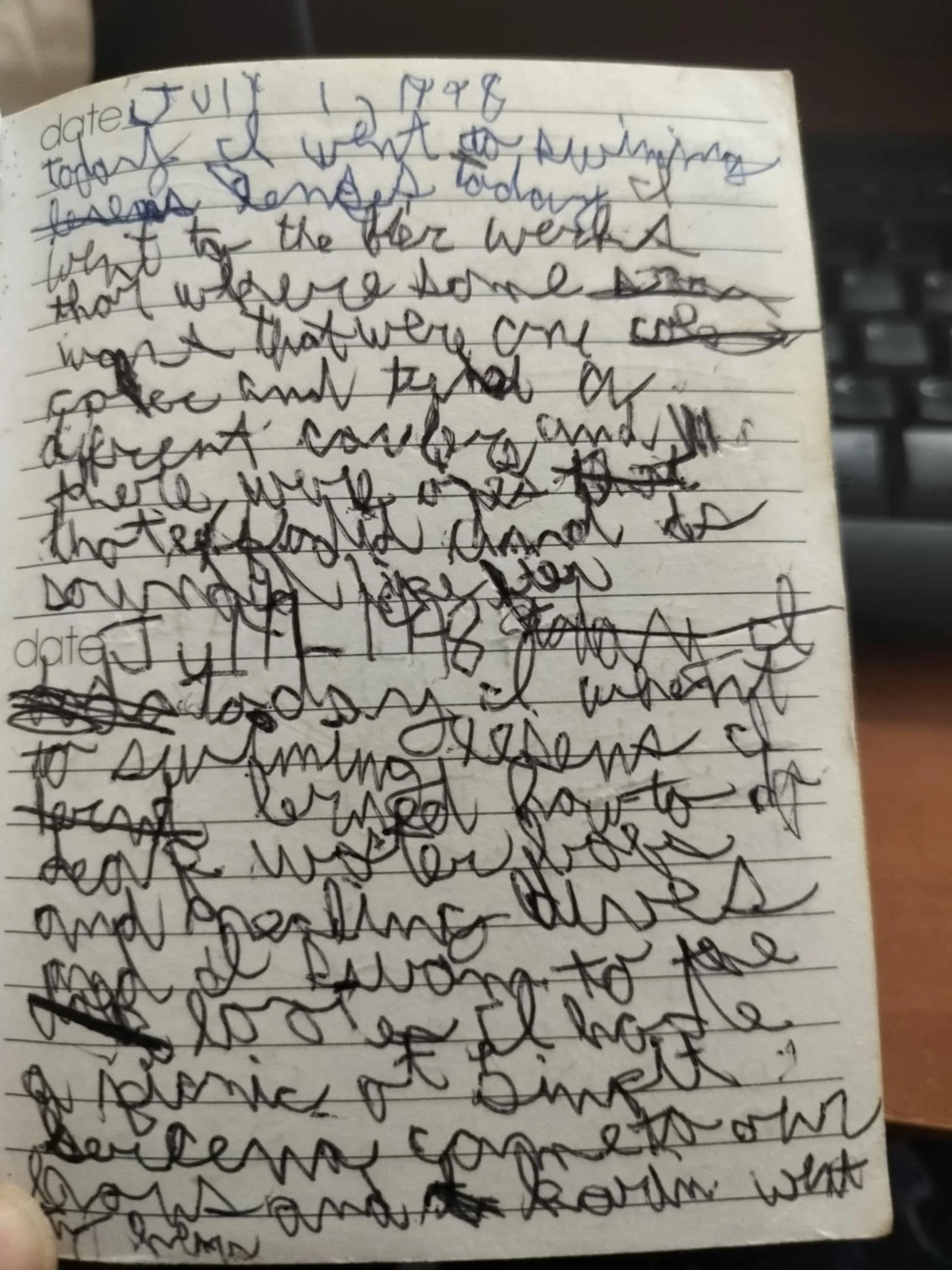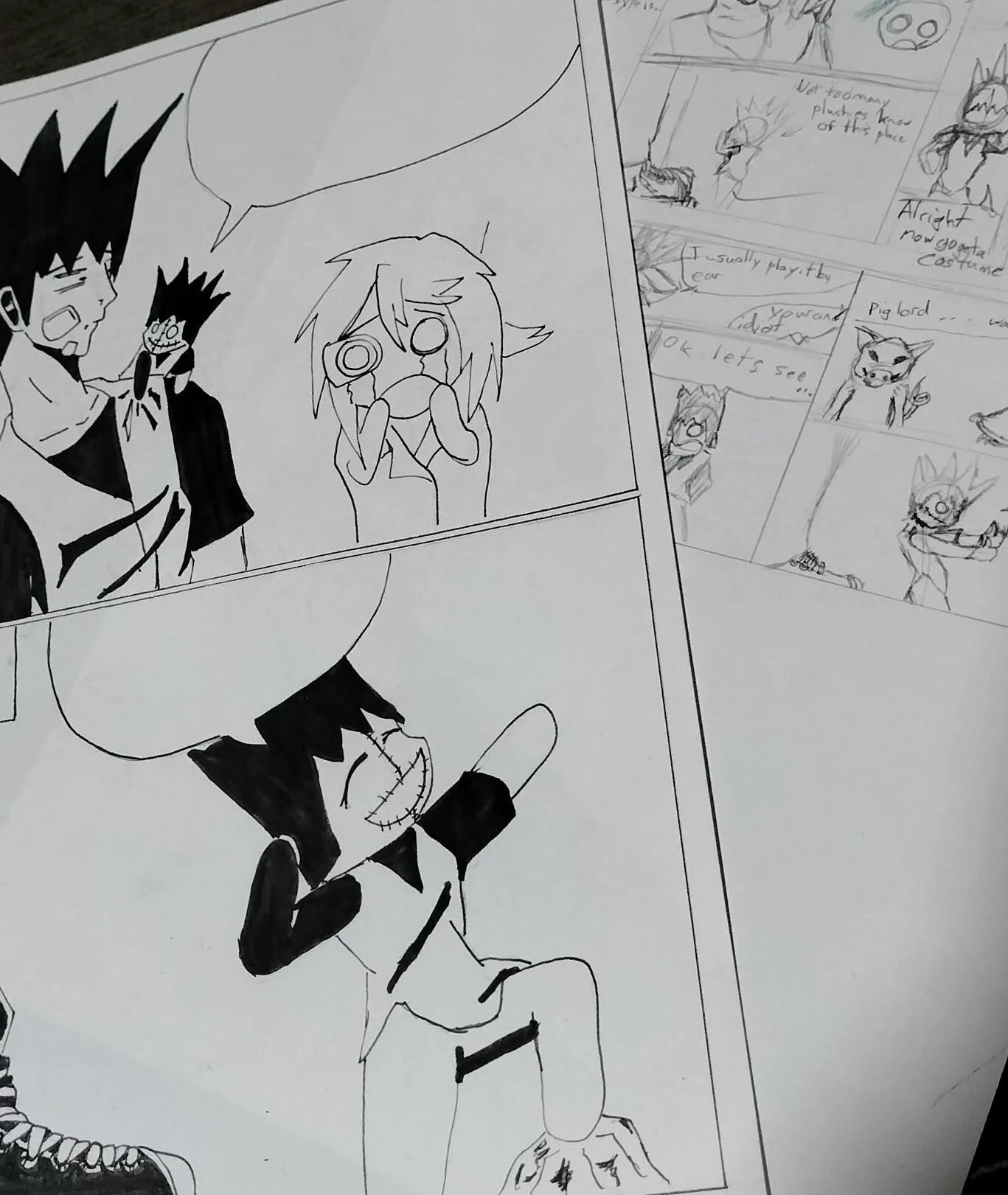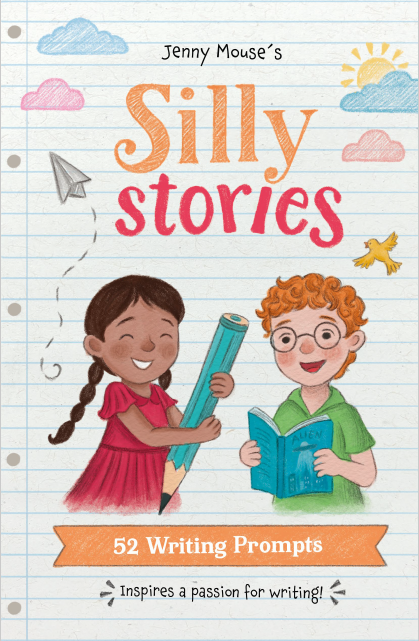Helping Kids with Dysgraphia Find Joy in Writing
Overcoming handwriting challenges
My messy handwriting when I was younger.
This was what my handwriting looked like at nine years old. For years I had special support during school and would be pulled out of class to work one on one on fine motor skills. I had to do sheets and sheets of extra handwriting practice at home after school. This image is a page from my journal, which I was forced begrudgingly to write in daily one summer. I hated all of it, and I knew there was nothing wrong with my fine motor skills, but for some reason my brain and my hand just did not want to connect.
The next year made all the difference. My grade 4 teacher recognized something in me, a penchant for creativity! She told me to write what I wanted. She didn't care if I was journaling or making up a story about a fairy princess rescuing a prince, she just wanted me to practice writing. Suddenly the pressure was lifted and I started having fun.
That summer I went home determined to write a novel! I have never stopped writing since.
Understanding Dysgraphia in Children
I remember that some teachers thought my short and to the point responses to answers were efficient, while others thought they were lazy. For me it was just survival. It took me years to learn how to plan a well thought out and detailed response, and it didn't click until I was provided with a scrap piece of planning paper where I could first write my curt response, and then plan a more elaborate answer. The two steps had to be separate.
I remember the frustration, the embarrassment, and despite the support, I felt like I must be stupid. Something must be wrong with me.
It didn't make sense until I learned that what I was struggling with was a learning disability called dysgraphia.
Dysgraphia is a learning disability that affects handwriting. It's a little bit like the dyslexia of handwriting. It can affect letter formation, word order, letter orientation, planning out written work, spelling, and grammar. Sometimes dysgraphia is very visible (such as my case with my messy handwriting), and other times it is hidden (such as difficulty planning while writing).
Struggling to learn letter formation
Inverted letters and numbers
Frustration when writing
Incomplete sentences or one word answers
Slow writing speed
Meet Your Child Where They Are: Dysgraphia Support at Home
If you notice your child struggling with their handwriting, you can consult their family doctor or pediatrician. There is a lot of support you can do at home while you wait for a formal assessment.
Meet your child where they are at. If all they can write is a single word, start there. Have them write one word and then draw pictures to go with it. Slowly increase up to a sentence, and then to a paragraph. The key is to move at your child's pace and to find ways to make writing fun.
How Parents Can Help Kids with Dysgraphia Build Confidence
1.Reduce pressure:
Don't worry about handwriting or spelling. Practice those skills separately.
My favourite way to teach this to kids is to teach them about writing "drafts". I tell them that professional writers don't care if the "rough draft" has spelling mistakes or is messy. They fix that up afterwards by doing editing.
2. Use planning tools
Children with dysgraphia struggle to think while writing, so experiment with:
Scrap pieces of paper
Speech to text
Typing
Dictation
Drawing or mind mapping
Writing a messy rough draft and typing up a good copy
Comics are a great way to practice writing.
Use silly prompts, create comic strips, make up writing games, decode secret messages!
Dig into your child's interests and harness those for writing practice.
4. Pre-Writing Skills That Help Kids with Dysgraphia Succeed
Hand strength, fine motor skills, core body strength, pencil grasp, hand eye coordination… these are all critical skills to develop in order to master handwriting.
Dysgraphia has buddies
Dysgraphia can happen all on its own, but it often buddies up with ADHD, autism, dyslexia, dyscalculia, and other common learning disabilities.
Creating Positive Writing Experiences
It is so important to make writing a positive experience for your child! Get your child laughing by being silly, and when you see them getting frustrated, it's time to take a break.
You can develop planning and story telling skills by playing games, putting on plays, and telling campfire stories. These playful non-writing activities can turn into writing inspiration later (and since they are already thought out they will be easier to write).
If you need some inspiration you can check out Silly Stories for Kids, a writing prompt journal with a silly story prompt for each week of the year!
If your child wants to learn how to plan, write, edit, and publish a book while getting support and feedback throughout the process from a real author we have a Little Author’s writing course available.
FAQ: Helping Kids with Dysgraphia
Q: What is dysgraphia?
A: Dysgraphia is a learning difference that affects handwriting, spelling, and organizing thoughts on paper. It’s not about intelligence—it’s about how the brain processes written language.
Learn more from the International Dyslexia Association
Q: What are common signs of dysgraphia in children?
A: Some signs include messy handwriting, letter reversals, frustration during writing, or very short written answers.
Read more at the Cleveland Clinic
Q: How can parents help a child with dysgraphia?
A: Encourage writing in fun, low-pressure ways—like storytelling, typing, or using speech-to-text tools. Focus on creativity before mechanics.
Explore pre-writing skill ideas
Q: Are there activities to make writing fun for kids with dysgraphia?
A: Yes! Try silly story prompts, comic strips, or games that let kids write for fun—not perfection.
Get playful writing prompts for kids


